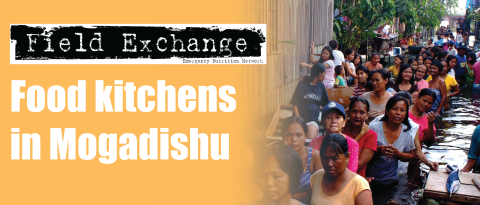Addressing poverty and undernutrition in India

Women collect drinking water in West Bengal Gram Panchayat
Summary of research1
There appears to be a paradox between the headline messages on inequality and what is actually happening on the ground in India. Differences in national income equality around the world are measured by the national Gini coefficient. The Gini coefficient is a number between 0 and 1, where 0 corresponds with perfect equality (where everyone has the same income) and 1 corresponds with perfect inequality (where one person has all the income, and everyone else has zero income). In India at a national level, the Gini coefficient is relatively low and has continued to be around 0.32-0.33 over the last two decades. However, gaps are visibly widening between rural and urban areas, across India's states and within states. A recent paper compares and contrasts the situation in West Bengal, where the range of poverty rates has declined somewhat across regions, and between rural/urban areas from 1993-2005, with Orissa, where the range of poverty rates have exploded over the same time period. For mean calorie consumption, the range of levels within both states, by region and by rural and urban areas, has increased dramatically across the board. A recent study has set out to look at what has caused these different experiences.
Orissa is remote and inhabited by tribal people. Reports of malnutrition and even starvation are typically denied at first; reactions are slow and often prompted by central government institutions rather than driven by motivations within the state government. Responses are marked by an emergency mode, rather than addressing the root causes of the problems. By and large, the interests of remote areas and deprived groups remain under-represented on the political scene. Discrimination vis à vis the lower castes and tribes is deeply rooted and attitudes have not been addressed in the administrative programmes and the categories of people employed. Despite legislation, security of access to land remains limited, and encroachment common. Displacement has affected large numbers of poor people, and resettlement programmes have been poorly implemented.

Elected women representatives from a Gram Panchayat and Panchayat Officials in West Bengal giving details of programmes including the ICDS scheme
The role of local governance in access to natural resources is an example of the broader problem of decentralisation in Orissa. Legislation for decentralisation has been progressive, for example through the introduction of a fourth layer of local governance. But socioeconomic inequalities appear to reproduce political inequalities, negatively affecting the potential that local governments will effectively implement programmes. The history of poverty responses in Orissa thus illustrates a worst case, an area where multidimensional forms of exclusion have kept large groups in deep poverty and malnourished for long periods of time, despite the existence of extensive policy frameworks. The predominant emergency mode of response has not worked, and has enabled policy makers to avoid addressing deeplyrooted forms of exclusion. For poverty and nutrition policies to be effective there is an urgent need to strengthen accountability.
West Bengal's socioeconomic history is radically different from Orissa and it has performed better in poverty reduction. Strengthening local government has been a tool for sharing power and a means for the party to reach out to the rural masses. Decentralisation is seen as the foundation for equitable development, taking administration close to people and addressing rural poverty and improving the delivery of services for all. Recent initiatives emphasise participatory or bottom up planning, and intensive hamlet level mobilisation and annual planning across the 12 poorest districts of the state. The government is progressively devolving finances and functions to Panchayats2, with departments directly transferring money to Panchayats with, for example, health workers reporting to them. The state ranks among the top of the league on the devolution index for the country, where Orissa is among the worst performers. Savings and credit groups or self-help groups (SHGs) at the hamlet level form the bedrock for women's participation in panchayat activities. Over two-thirds of women are members of SHGs and typically participate in hamlet level panchayat meetings. The government has set up a comprehensive capacity building plan for elected representatives and the panchayat officials, to build capacities of the leaders of all tiers to manage resources, collect revenues and perform accounting, and to plan and deliver services.
Key indicators of the success of West Bengal development are:
- Over 90% of local government plans reflect hamlet level priorities, with the majority of the development expenditure targeted at the poor.
- Three out of four households participate regularly in panchayat meetings, with onethird claiming to influence decision-making.
- Decentralisation has resulted in improvement in access and delivery of basic services specifically for drinking water, primary healthcare, education and toilets.
- Efficient functioning of panchayats is also contributing to increased income and assets for 70% of poor households. Just under half of these households demonstrate a growth of 15-30% in their average household income.
Decentralisation seems essential in the delivery of India's development programmes, but this needs to go hand in hand with capacity building of elected representatives and officials in community mobilisation. A particular concern is that programmes seem to work least well where they are most needed. Orissa illustrates this case and highlights that poverty and undernutrition are part of a much broader development failure, rooted in deep social and political inequalities. It is unlikely that successful experiences from elsewhere can be transplanted straightforwardly - or even at all - to these most deprived areas.
1De Haan. A, Dubey. A and Sabharwal. G (2009). Between emergency responses and rights-based approaches: Addressing poverty and undernutrition in Eastern India. IDS Bulletin, volume 40, no 4, July 2009, pp 39-44
2The Panchayat is a South Asian political system mainly in India, Pakistan, and Nepal. "Panchayat" literally means assembly (yat) of five (panch) wise and respected elders chosen and accepted by the village community. Gram panchayats are elected local governments at the village or small town level in India
Imported from FEX website


